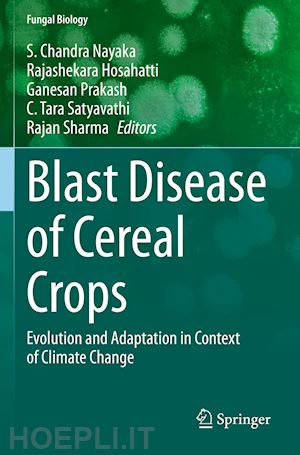Dr. S. Chandra Nayaka is an agricultural biotechnology researcher specialized in the application of biotechnological tools in plant protection, pathogen detection and plant-pathogen interaction. He has 20 years of experience in research including visiting scientist at Danish Government Institute of Seed Pathology, Denmark, China Agricultural University, Beijing, China, and he is the Principal Investigator ICAR-AICRP-Pearl millet pathology research.
Working as Professor (ICAR-AICRP-Pearl millet) at University of Mysore in Indian Council of Agricultural Research, responsible for research works on “pearl millet disease, viz., biology of the pathogen, biochemical and molecular aspects of host-pathogen interaction, epidemiology and management of the disease.” His laboratory is one of the leading research laboratories on pearl millet pathology research in India. His research group is the first group in the world who sequenced full length genome of biotrophic highly virulent strainof S. graminicola. He is recipient of prestigious Japan International Award for Young Agricultural Researchers 2017 and The Millennium Plaques Honor 2019 (Prime Minister Award for Contribution in the field of Science & Technology) by Indian Science Congress Association, DST, Govt. of India. To date, he has more than 2250 research citation with 28 h Index and 60 i10 index. Obtained four national patents for his innovative research projects, published more than hundred research articles in reputed National and International journals, 08 books, 15 book chapters, 03 application notes (Agilent technologies, USA) Six Technical Bulletins, Sixteen short publications/popular articles and submitted more than 1000 nucleotide sequences of seed-borne pathogens and bio-control agents to NCBI-USA, EMBL-Europe and DDBJ-Japan database
Rajashekara H is a Scientist in Plant Pathology currently working at Crop Protection Section, ICAR-Vivekanada Parvatiya Krishi AnusandhanSansthan, Almora, Uttarakhand, India. His area of interest include race profiling of Magnaporthe oryzae in rice and working on identification of resistant source, variability in blast disease of rice and finger millet. He is also emphasizing on integrated management of disease in major disease of hill crops. He has published 15 peer reviewed research articles, book chapters and extension leaf folders.
Prakash Ganesan is a Scientist in Plant Pathology currently working at Division of Plant Pathology, Indian Agricultural Research Institute, New Delhi, India. His area of specialization is Magnaporthe-Host interaction, Genomics of Magnaporthe spp. and Genome Editing for Blast Resistance. He is also associated with development of blast resistant varieties. Also actively involved in teaching and guiding the students. He has published more than 20 peer reviewed research articles, book chapters, training manuals and other publications also.
Dr. (Mrs). C. Tara Satyavathi completed Ph.D. in the year 1998 from Indian Agricultural Research Institute, New Delhi. Presently she is working as Project Coordinator ICAR - AICRP on Pearl Millet, Rajasthan. She was Principal Scientist in the Division of Genetics, IARI, New Delhi. She has re-oriented pearl millet programme at IARI, developed hybrids (1) and varieties (3), identified QTL(s) for downy mildew resistance, agronomically important traits, developed and identified high grain iron and zinc pearl millet lines, genetic stocks for high lysine, high tryptophan, white grain etc. She developed a number of mapping populations for economically important traits like downy mildew, thermo tolerance, along with a number of white coloured pearl millet lines that are of use in food industry. Dr. Satyavathi received many awards including Dr. Panjabrao Deshmukh outstanding woman scientist award (2016), Outstanding Millet Scientist award (2018), outstanding researchcontribution in Pearl Millet Improvement in the country (2018) and M.S. Swaminathan Woman Scientist Award (2019) along with many best research paper and best poster awards. She has published 88 research papers in reputed national and international journals. She has written six books and handled 20 research projects financed by DAC, Govt. of India, DBT, AP Cess fund, GLDC Innovation fund, BMGF and ICAR. She has successfully guided three students for Ph.D. degree and eight students for M. Sc degree.
Dr Rajan Sharma is Principal Scientist – Cereals Pathology, and Head of Plant Quarantine unit, at ICRISAT, Patancheru, Hyderabad, Telengana, India. He has obtained his PhD degree from Himachal Pradesh Agricultural University, Palamapur, India and was awarded a Gold medal by Him-utkarsh Society, Una, India. He has made significant contributions in monitoring virulence spectrum of pearl millet pathogens, development of PCR-compatible markers and their use in assessment











